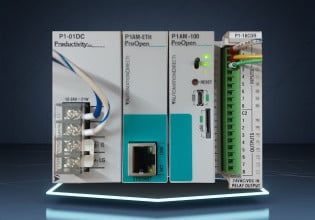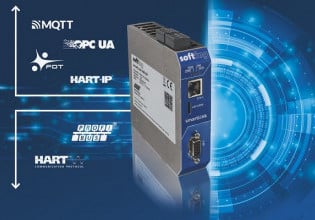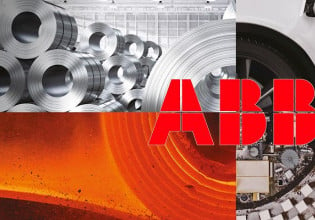Industrial and Robotic Connectors: Choosing Suitable Contacts for Cable Connections
Selecting a suitable electrical connector is a process that is based on how you will terminate it to the system. This article provides advice on how to make the right contact selection for your industrial or robotic system.
As we all know, industrial automation and robotics involve the transfer of signals in the form of power or data from one system to the other. The process of signal transmission is made complete through the mating of several interfaces, and connectors play a very significant role in making the process complete. Connectors are classified as female or male depending on the type of contacts attached to them.
This article is a guide on what contacts are and how to make a suitable contact selection for your industrial automation and robotic application.
What are Connector Contacts?
Connector contacts are pins and sockets that are fixed on the connectors to establish the required electrical connection between the connector and another connector. They are necessary to help connectors operate within the rated current and voltage requirements, the specified physical and mechanical loads, and within set environmental conditions.
The chosen connector contacts should offer a solid connection between contact barriers, while both sides of the contact should have similar material for congruous specifications achievement. These connector contacts are manufactured with different specifications and features based on the area of use. They are available in different sizes, surface areas, lengths, and ratings; the user must select the best option based on where and why they want to use it.

Figure 1. A variety of connector contact styles. Image used courtesy of Connector Contacts
Connector Contacts Types
Connector contacts come in many types, manufactured in several industrial ways. Machined contacts come with great power density, higher current, and lower resistance as compared to stamped contacts. Stamped contacts, being more easily crimped, are used in areas where wire termination expense is a great concern while still achieving reliable performance.
Some of the contacts available are thermocouple contacts, used in temperature measuring and testing applications, as well as hermetic contacts used for air and gas-tight connection areas.
Contacts can be further classified as assembled and non-assembled types. The contacts are also classified as signal and power; signals communicate information from the source to the destination, while power transfers current and voltage to operate the equipment or component.
Connector Contacts Termination
Termination, in the case of connectors, refers to how one individual conductor ends, allowing it to contact the PCB or mating cable. There exist three common types of connection contact terminations as discussed below:
Crimp Termination
In these connections, a tool is used to mechanically tighten the metal contact around the stripped cable wires for complete electrical contact. One part of the contact crimps the metal itself, while the other part crimps the wire insulator. To make a better crimping joint, we use a crimping tool around the insulation and the wire.

Figure 2. Crimping termination. Image used courtesy of Omega Leads
Solder Termination
Every connector contact in such termination mode has a pin or solder cup at the end, offering a surface for soldering of the wire. Alternatively, it can be done through the PCB by inserting the pins through holes and soldering them.
Screw Termination
Some connector contacts use a screw mechanism to terminate. A wire is inserted into the contact receptacle then an inbuild screw secures it. Such type of termination does not give a compact connection as other types do but comes with the advantage of easy removal of the wire in the fields.

Figure 3. Screw termination for a pair of coaxial connectors. Image courtesy of the Author
How do You Choose a Suitable Connector Contact?
This section introduces you to important considerations that you should make before choosing or buying contacts that will deliver a perfect outcome for your industrial and robotic application. These specifications include wire size, contact type, delivery options, and plating, just to name the main ones.
Wire Size
Wires come in different sizes and the size of the wire will determine the size and type of the connector contact that the user should select. See Figure 4 below for the various standard sizes of crimping contacts.

Figure 4. Crimping contact standard sizes by UTS Series Pg. 164/165
Contact Type
Here the user has a choice to make between stamped, formed, and machined types of contacts. The choice is determined depending on the availability of crimping equipment and personal preferences. Machined contacts make a good application on low-volume orders power systems because they can survive heavy-duty and intensive usage. The formed and stamped contacts are flexible with automated crimping equipment and hence are preferred for mass production orders.
Delivery/Packaging Options
Contact components can be reel-packaged or bag packaged. Machined contacts are placed in loose bags, while formed and stamped contacts are packed in reels. Your workshop setup decides what type of contact package to buy.
Plating
Plating is an important factor in contact selection as it determines the connection, conductivity, and durability of the contacts, thus it must be considered while selecting the contacts. Small contacts of below 1A are plated using gold size 0.4 micrometer. Bigger contacts are plated using tin due to the high cost associated with gold.
Connector Contacts for Industrial and Robotic Applications
Industrial automation requires the interfacing of systems with each other. For example, connecting a motor to a robot arm. To achieve this, you have to select a connector with a suitable contact that cannot affect the power and data flow within the system. Therefore, an engineer or user dealing with the cabling of such equipment should have good information about necessary connectors and contacts for terminating the cables and wires. The user should be able to know the wire size, type of contact, type of connector, materials used in making wire and connector, plating of the contacts, packaging, and power rating for proper contact selection.






